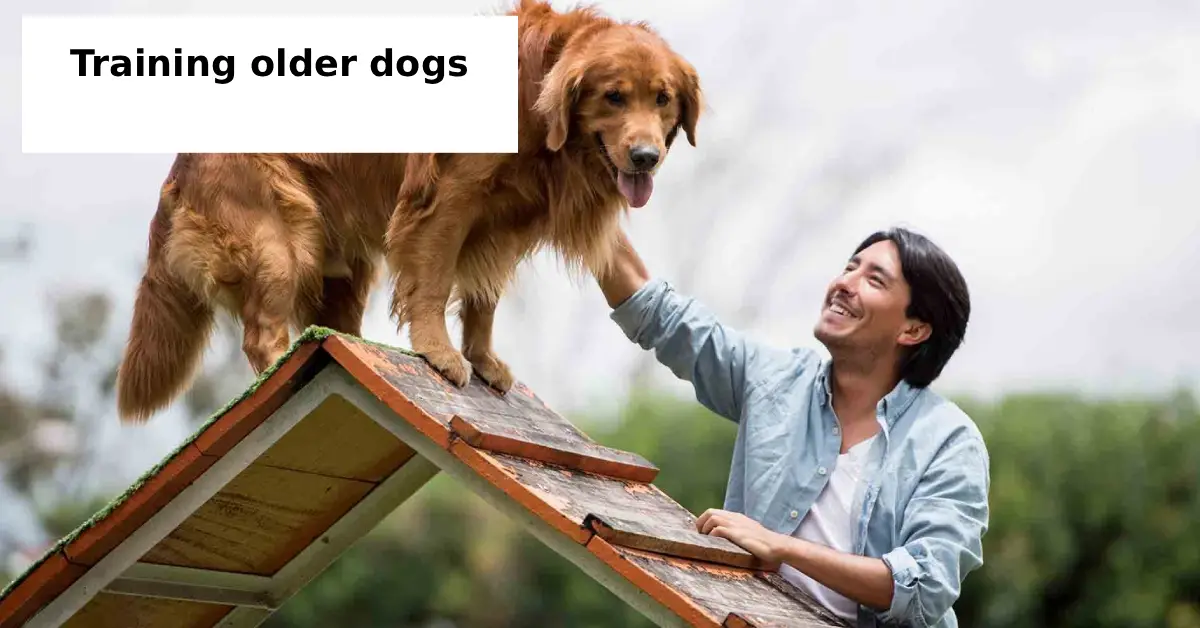Training isn’t just for puppies—training older dogs is equally important, whether you’ve lived with your furry companion for years or recently welcomed a senior rescue into your home. Many pet parents believe that older dogs are “too set in their ways” to learn new habits, but research and real-world success stories show otherwise.
This guide will help dog owners in the United States with pets aged 7 years and older, families who have adopted or rescued an older dog, and senior citizens who want to train aging pets with gentle, positive, and effective methods. By the end, you’ll feel confident about teaching your senior pet good manners, reinforcing positive habits, and addressing any behavioral challenges that come with age.
Why Training Older Dogs Matters
Older dogs may already have basic manners, but that doesn’t mean training stops. Just like humans, dogs continue to learn throughout their lives. Regular training helps:
- Strengthen your bond with your pet
- Keep their mind sharp and engaged
- Reduce anxiety and behavior issues
- Make daily routines smoother and safer
For pet parents dealing with behavioral changes in senior dogs, training provides a structured way to handle challenges like barking, aggression, or forgetfulness.
Common Myths About Training Older Dogs
Before diving into practical steps, let’s bust some myths:
- Myth: Old dogs can’t learn new tricks.
Fact: With patience and consistency, senior dogs can learn just as effectively as puppies. - Myth: Training stresses older pets.
Fact: Gentle training techniques for old dogs are designed to reduce stress while keeping learning fun. - Myth: Behavior problems in older dogs are permanent.
Fact: With the right approach, many issues can be managed or even resolved.
Senior Dog Training Tips for Success
When it comes to senior dog training tips, patience and consistency are key. Here’s how to set the stage:
- Keep sessions short: Aim for 5–10 minutes, two to three times a day.
- Use positive reinforcement for senior dogs: Rewards such as treats, gentle praise, or toys work best.
- Be mindful of physical limitations: If your dog has arthritis, avoid activities that strain their joints.
- Practice daily consistency: Even small wins add up to lasting habits.
How to House Train an Older Dog
House training isn’t just for puppies. Sometimes senior dogs may need a refresher due to medical changes, new environments, or memory issues.
- Establish a regular potty schedule and take them out at the same times daily.
- Use crate training older dogs to encourage bladder control and prevent accidents when unsupervised.
- Rule out medical causes like urinary tract infections if accidents persist.
For families who recently adopted or rescued an older dog, patience is essential since your pet may still be adjusting to new surroundings.
Leash Training for Older Dogs
Walking should be enjoyable, but many seniors pull or resist the leash. Here’s how to manage it:
- Use a comfortable harness rather than a collar to avoid pressure on the neck.
- Introduce calm, slow-paced walks to suit their energy level.
- Reinforce good behavior with small treats when they walk without pulling.
Leash training for older dogs not only improves safety but also keeps them mentally and physically active.
Obedience Training for Senior Dogs
Even if your dog knows the basics, revisiting obedience cues like “sit,” “stay,” or “come” is beneficial. Obedience training for senior dogs provides mental stimulation and helps maintain discipline in daily life.
- Use gentle training techniques for old dogs—avoid punishment.
- If your dog has hearing loss, switch to hand signals instead of voice commands.
- For vision-impaired dogs, rely more on verbal cues and touch.
Consistency ensures that obedience remains reliable even as your pet ages.
Addressing Behavior Problems in Older Dogs
Behavioral changes are common in seniors. Issues may include barking, aggression, separation anxiety, or forgetfulness.
- Consult a veterinarian to rule out medical causes such as cognitive decline or pain.
- Provide regular mental stimulation with puzzle toys and training exercises.
- Apply best dog training methods for seniors that emphasize patience, repetition, and comfort.
Pet parents dealing with behavioral changes in senior dogs should remember that these issues are often signs of aging—not defiance.
Crate Training Older Dogs
Many owners believe crates are only for puppies, but crate training older dogs can be equally useful.
- Crates offer a safe, cozy space for rest and recovery.
- They help with house training or managing anxiety when left alone.
- Always introduce the crate positively—never use it as punishment.
For U.S. households looking for gentle, low-stress training techniques, crate training works well when introduced correctly.
Gentle Training Techniques for Old Dogs
Older dogs need kindness and empathy. Gentle training techniques for old dogs focus on respect for their physical and emotional needs.
- Use soft, encouraging tones.
- Avoid harsh corrections or negative reinforcement.
- Break down training into small, manageable steps.
This approach ensures training remains enjoyable instead of stressful.
Rehomed Older Dog Training
Rescued or rehomed dogs often come with unknown backgrounds. Training helps build trust and structure in their new life.
- Start with bonding activities before formal training.
- Teach simple commands to establish communication.
- Practice consistency so your dog feels secure in routines.
Families who recently adopted or rescued an older dog may need more patience, but with time, rehomed pets thrive in loving environments.
Positive Reinforcement for Senior Dogs
Positive reinforcement for senior dogs is one of the most effective ways to teach new habits. Instead of focusing on what not to do, reward desired behaviors immediately.
Examples include:
- Offering treats for sitting calmly at the door.
- Praising when your dog walks beside you without pulling.
- Using toys or gentle petting as motivators.
This method creates a happy, willing learner—essential for seniors who may be sensitive to stress.
Best Dog Training Methods for Seniors
The best dog training methods for seniors are those that combine consistency, patience, and compassion. Some proven strategies include:
- Clicker training with gentle sounds.
- Reward-based repetition.
- Modified exercises that match your dog’s mobility level.
Always adjust methods to your dog’s health condition and comfort level.
Additional Resources
If you’re also dealing with younger pets, check out related guides like puppy biting training, which complements your knowledge as a multi-pet household.
Final Thoughts: Training Older Dogs With Love
Training older dogs is not only possible but also deeply rewarding. With gentle methods, patience, and positive reinforcement, your senior pet can continue learning, stay mentally sharp, and enjoy a happier life.
Remember, every dog deserves the chance to thrive—whether they’ve been with you for years or were recently adopted into your family.
Quick Checklist for Senior Dog Training
- Keep sessions short and positive
- Use gentle reinforcement methods
- Revisit house, leash, and obedience training
- Address behavior changes with patience
- Adjust training to health and mobility needs
With the right approach, training older dogs becomes a meaningful journey of love, trust, and companionship.





